Understanding **double in darts rules** is crucial for both beginners and seasoned players, as it dictates how you finish a leg of 501. In essence, you must hit a double to win. This article will comprehensively cover everything you need to know about finishing on a double, including strategy, common mistakes, and practice drills to improve your game.
⚠️ Still Using Pen & Paper (or a Chalkboard)?! ⚠️
Step into the future! The Dart Counter App handles all the scoring, suggests checkouts, and tracks your stats automatically. It's easier than you think!
Try the Smart Dart Counter App FREE!Ready for an upgrade? Click above!
The Importance of Doubles in Darts
In the game of 501, and many other variations of darts, the ultimate goal is to reduce your score to zero. However, there’s a catch: you must land your final dart in a **double**. This simple rule adds a significant layer of strategy and pressure to the game, making **double in darts rules** perhaps the most important aspect to master.
Without the ability to consistently hit doubles, even the highest scores become meaningless. Imagine hitting multiple 180s (three treble 20s) but failing to close out the leg because you can’t land that crucial double. That’s why dedicated practice on doubles is paramount for any aspiring darts player.
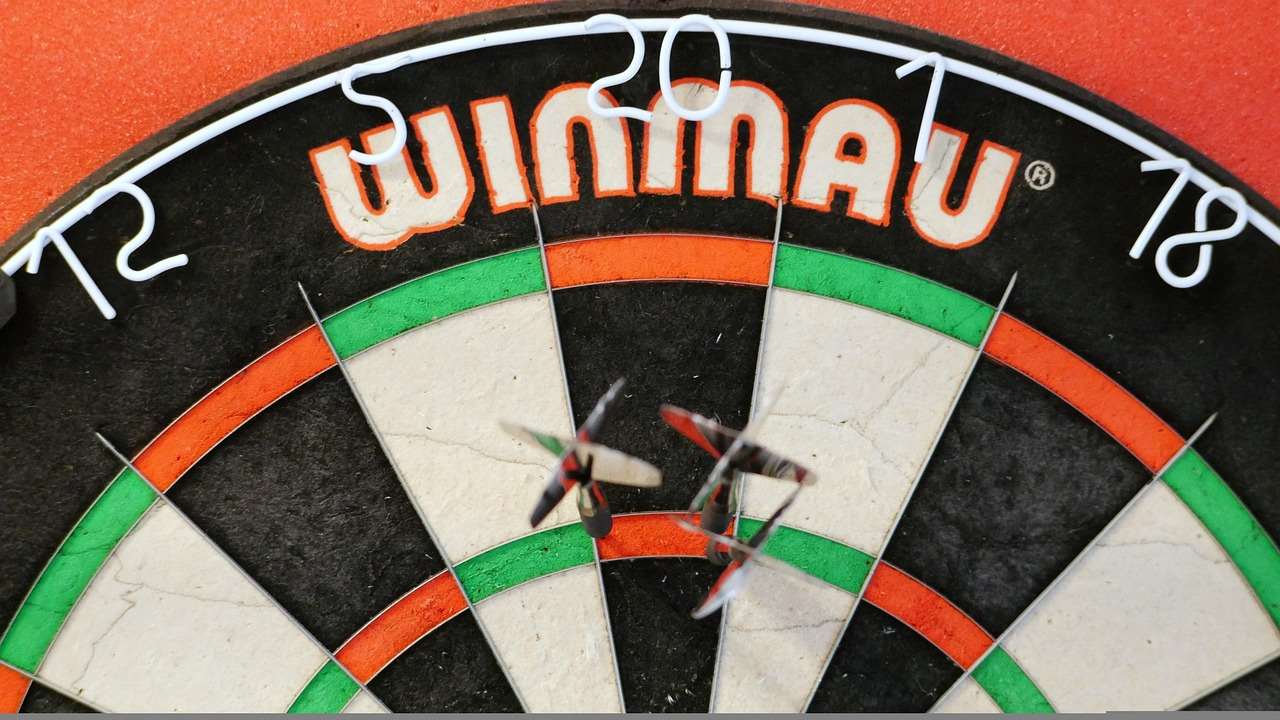
Decoding Double In Darts Rules: A Comprehensive Guide
Let’s delve deeper into the specifics of **double in darts rules**. A double is defined as the outer ring of the dartboard. Hitting a dart in this ring doubles the numerical value of that section. For example, hitting the double 20 scores 40, and hitting the double 1 scores 2. It’s worth noting that the bullseye itself has two sections, the outer bull (worth 25 points) and the inner bull (worth 50 points), which counts as a double for finishing purposes. Therefore, the inner bullseye can also be referred to as a **double 25**.
Here’s a breakdown of key considerations:
- Finishing Blow: Your last dart thrown must land on a double that brings your score to exactly zero.
- Overshooting: If you score more than you need to reach zero, the throw is invalid. Your score returns to what it was at the start of that turn. This is called “going bust”.
- Leaving an Unreachable Double: Sometimes, through poor scoring, players can make it mathematically impossible to finish on a double in one turn. For example, being left on an odd number other than one is unreachable.
Common Scenarios and Strategies
Understanding common scenarios and how to approach them is key to improving your doubles game. Here are some examples:
- Remaining on 32: The most common and often-practiced checkout, targeting the double 16 is usually the best option.
- Remaining on 40: Many players will target double 20 to close out this one.
- Remaining on 16: Attempting to hit double 8 is the standard approach.
These are just a few of the common checkouts, and mastering them can significantly improve your chances of winning. Remember that consistent practice of **checkout combinations** will help you become a more strategic player.
Checkout Charts: Your Guide to Finishing on a Double
Checkout charts are invaluable tools for darts players of all levels. They provide a quick reference for the best ways to finish from any given score, always ending on a double. Memorizing key checkouts and having a checkout chart handy during practice can dramatically improve your game. A darts **checkout chart** will list the optimal throw sequences to end a leg, always concluding with a double.
Online resources and mobile apps offer comprehensive checkout charts, including probabilities and alternative routes depending on your proficiency with different doubles. Using these resources helps you learn the **mathematics of darts** and develop a strategic approach.
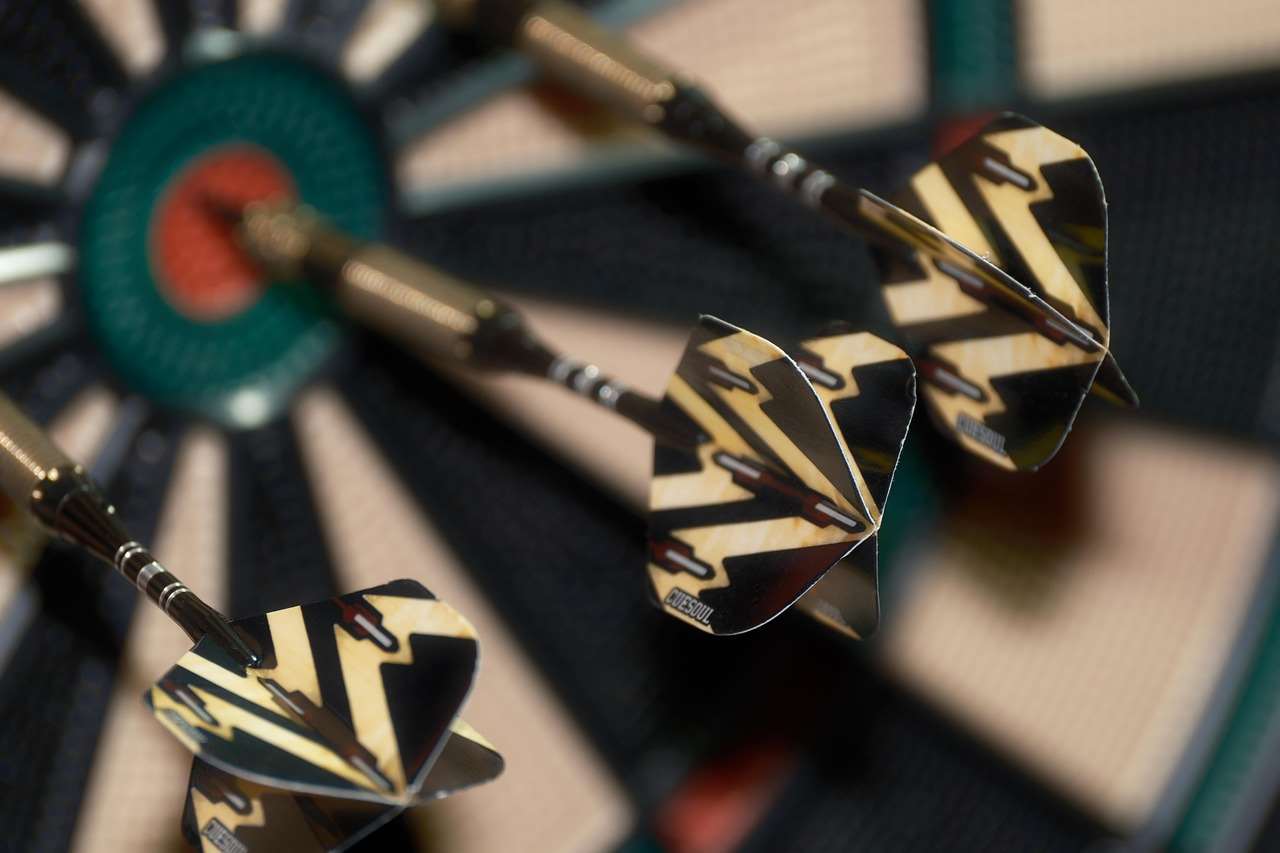
Strategic Double Selection: Choosing the Right Double
While mastering common checkouts is important, choosing the right double based on your strengths and weaknesses is equally crucial. Some players excel at hitting the double 20, while others prefer the double 16 or the double 10. Experiment with different doubles during practice to identify which ones you are most comfortable and consistent with. Moreover, consider that the area around the double target affects the next dart that you throw. If the first dart lands slightly above or below the double, where is the second dart most likely to hit? This helps to form a more specific strategy around **darting accuracy**.
Think about your fallback options. What happens if you miss your target double? Will you leave yourself with an easier checkout, or will you put yourself in a difficult position? Strategic **double selection** involves considering these factors and making informed decisions based on your skill level and the situation at hand.
For example, if you are left with 40 and prefer hitting the double 20, but you know you sometimes drift slightly to the right, it might be wiser to aim for the double 10 instead. A miss to the right will still leave you with a manageable number, whereas a miss to the right of the double 20 could leave you with an awkward score. You might also want to look at target darts ares.
Common Mistakes and How to Avoid Them
Many players struggle with doubles due to common mistakes in their technique or strategy. Here are some pitfalls to avoid:
- Rushing Your Throw: Take your time, focus on your target, and maintain a smooth, consistent throwing motion.
- Changing Your Stance or Grip: Consistency is key. Stick to a stance and grip that feels comfortable and allows you to maintain accuracy.
- Not Practicing Enough: Doubles require dedicated practice. Set aside time specifically for practicing your checkouts.
- Ignoring the Pressure: Doubles are high-pressure situations. Learn to manage your nerves and maintain your focus under pressure.
By being aware of these common mistakes and actively working to avoid them, you can significantly improve your doubles percentage. Mastering the **psychology of darts** is also vital. Remind yourself to stay calm and focused during high-pressure situations.
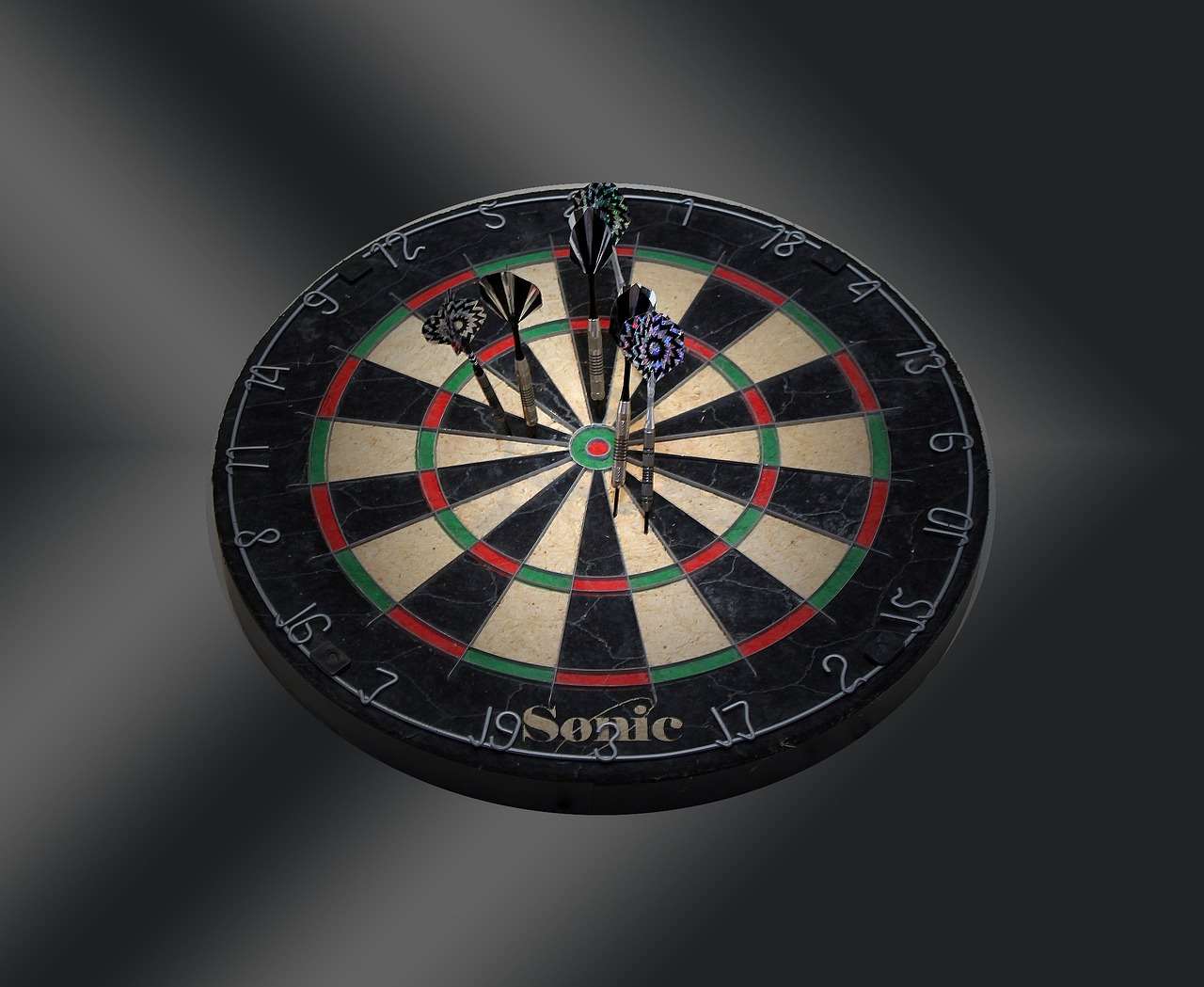
Practice Drills to Improve Your Doubles Game
Effective practice drills are essential for honing your doubles skills. Here are some drills you can incorporate into your training routine:
- Around the Clock: Start with double 1 and work your way around the board to double 20, hitting each double three times before moving on.
- Double In, Double Out: Start each leg by hitting a double to begin scoring, and finish by hitting a double to win.
- Checkout Practice: Focus on specific checkouts, such as 32, 40, or 50, and practice them repeatedly until you can consistently hit them.
- High Score to Checkout: Start with a high score (e.g., 100) and try to check out in as few darts as possible.
Regularly incorporating these drills into your practice sessions will help you develop muscle memory and improve your accuracy when throwing for those crucial doubles. Consider using a dartcounter for pc to help keep score and track your progress during practice sessions.
Mental Toughness and Doubles
Doubles are as much a mental game as they are a physical one. The pressure of needing to hit that final double to win can be overwhelming. Developing mental toughness is crucial for overcoming this pressure and performing at your best. The mental aspect of darts cannot be underestimated. Practicing mental preparation techniques can significantly improve your performance. Things such as deep breathing exercises can help steady your throwing arm.
Here are some tips for developing mental toughness:
- Visualize Success: Before each throw, visualize yourself hitting the double.
- Stay Positive: Even if you miss, don’t get discouraged. Focus on the next throw and stay positive.
- Control Your Breathing: Take deep, slow breaths to calm your nerves.
- Focus on the Process: Concentrate on your technique and the target, rather than the outcome.
By mastering your mental game, you can approach doubles with confidence and composure, increasing your chances of success. Remember that Electronic dart score counter apps can also provide valuable data and insights to help you analyze your performance and identify areas for improvement.
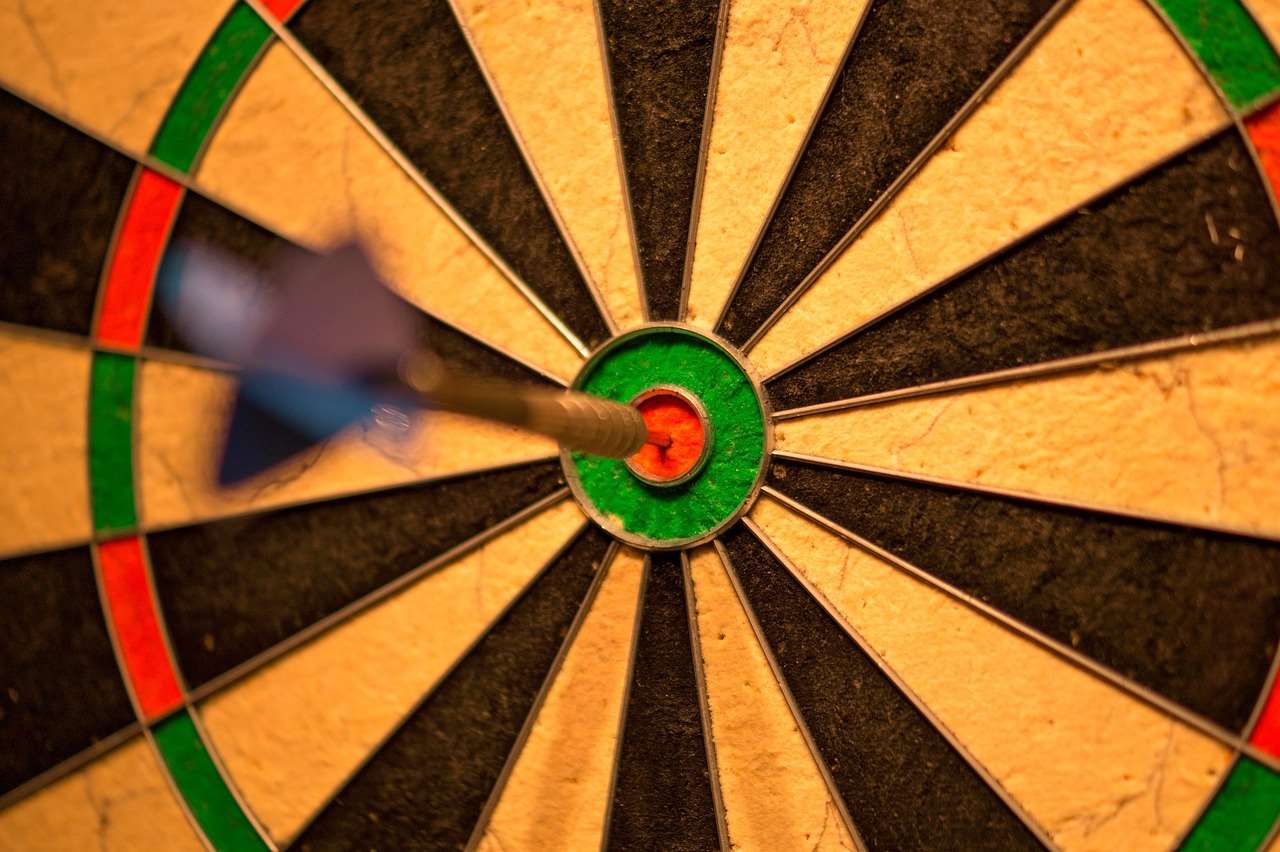
Equipment and Doubles
While skill and practice are paramount, having the right equipment can also contribute to your success with doubles. Consider the weight, grip, and balance of your darts, and choose equipment that feels comfortable and suits your throwing style. Experiment with different flights and shafts to find the optimal combination for your darts. Also, always be mindful of changing dart points to keep your darts in peak condition.
- Dart Weight: Experiment to find the optimal weight.
- Grip: Choose a grip that feels secure and comfortable.
- Flights and Shafts: Try different combinations to optimize your dart’s flight path.
Taking the time to find the right equipment can give you a slight edge and improve your overall performance. Just remember that while equipment can help, it’s ultimately your skill and practice that will determine your success.
Advanced Double Strategies
Once you’ve mastered the basics, you can start exploring more advanced strategies for finishing on doubles. This includes learning less common checkouts, such as those involving the bullseye or less frequently targeted doubles. You should also look into dart barrel length chart information to tailor your darts to your individual playing style. Adapting your strategy based on your opponent’s performance and tendencies can also give you an advantage. It’s also important to note dart barrel mit viel grip. A good grip is an important factor. Remember, **advanced strategies** require a solid foundation in the fundamentals. Continually refine your technique and practice regularly to maintain your consistency and accuracy.
Another advanced strategy is to consider the potential outcomes of your throws. For example, if you are aiming for a double 20 but miss slightly to the left, what number will you leave yourself? Understanding these potential outcomes and planning accordingly can help you minimize your risk and maximize your chances of success.
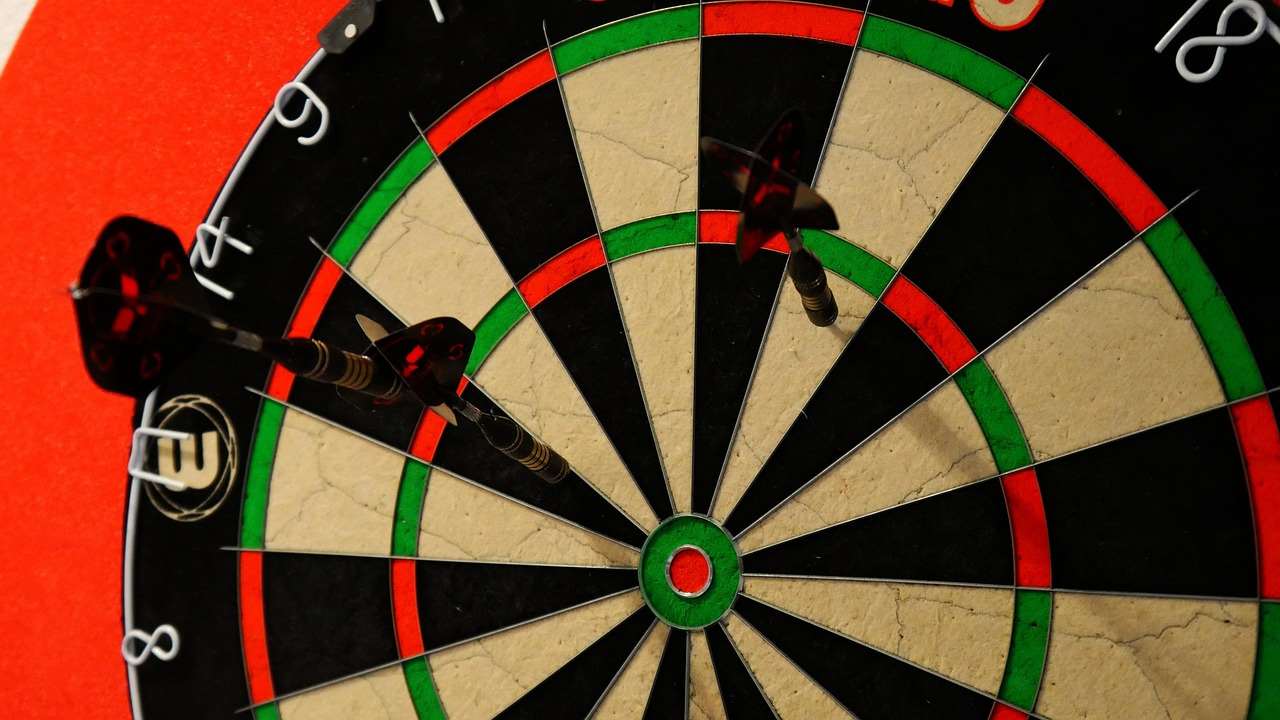
Conclusion: Mastering Double In Darts Rules
Mastering **double in darts rules** is the cornerstone of becoming a proficient darts player. By understanding the rules, practicing diligently, developing a strategic approach, and cultivating mental toughness, you can significantly improve your doubles percentage and elevate your game. Remember to utilize checkout charts, experiment with different doubles, and learn from your mistakes. Regular practice and a dedication to continuous improvement are the keys to achieving your goals. Now, go out there, practice those doubles, and start winning those legs!
Ready to take your darts game to the next level? Start practicing these tips today and see the improvement in your game!
Hi, I’m Dieter, and I created Dartcounter (Dartcounterapp.com). My motivation wasn’t being a darts expert – quite the opposite! When I first started playing, I loved the game but found keeping accurate scores and tracking stats difficult and distracting.
I figured I couldn’t be the only one struggling with this. So, I decided to build a solution: an easy-to-use application that everyone, no matter their experience level, could use to manage scoring effortlessly.
My goal for Dartcounter was simple: let the app handle the numbers – the scoring, the averages, the stats, even checkout suggestions – so players could focus purely on their throw and enjoying the game. It began as a way to solve my own beginner’s problem, and I’m thrilled it has grown into a helpful tool for the wider darts community.